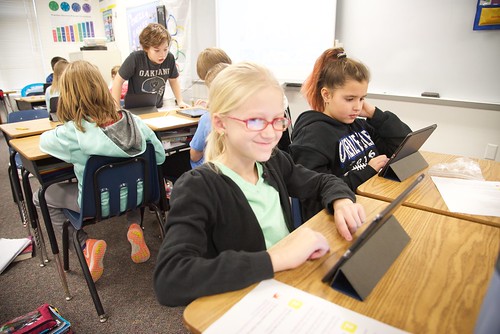Swift Playgrounds app
Apple recently released a free iPad app from which anyone can learn the Swift programming language. The Swift Playgrounds app will only run on a newer iPad updated to at least iOS 10, but if you are able to access it, you should definitely give it a try! The logic skills and fundamental coding lessons are excellent for any age (although geared more towards grades 5-8, in my opinion). Within the app you will find various challenges in addition to 'Learn to Code 1 and 2' including a special "Hour of Code" challenge, designed to be completed in about an hour. Also, don't forget about the free teacher's guides available, making exposure to coding easy for an educator to implement regardless of personal experience.
Code.org
If you don't have a new enough iPad to run the Swift Playgrounds app, there are plenty of alternative options. Choose an 'Hour of Code' activity to get started and then go beyond an hour by joining a self-paced course.Some of the Hour of Code activities that students really enjoyed from the Code.org website this year included the following:
Minecraft Hour of Code
Star Wars: Building a Galaxy with Code
Code Your Own Sports Game
Artist
See all possible activities (and filter by age level, experience, coding language, etc.) here:
Code with Google
Mickie Mueller and Becky Miller shared a Google Hangout on Air about Hour of Code Google Style.You can view the recording below.
The following were resources they shared:
- Apps: Kodable, The Foos, Tynker
- https://www.madewithcode.com
- https://www.cs-first.com/en/overview
- https://santatracker.google.com/codeboogie.html
http://www.livebinders.com/play/play?id=1463396
ESU 8 schools who participated in Hour of Code activities were numerous! I was personally able to visit several classrooms and lead a few activities myself. It was wonderful to see firsthand students' excitement and ability to master the art of block coding in a very short time. The rich dialogue, college and career-ready skills, and deep life lessons that come from these student experiences validate the small amount of time they take in our schools. If we have the opportunity to hook one kid onto something that he or she can continue to pursue independently, we have opened a tremendous doorway for their future!

2016 Hour of Code photos from ESU 8 ... click to advance images










